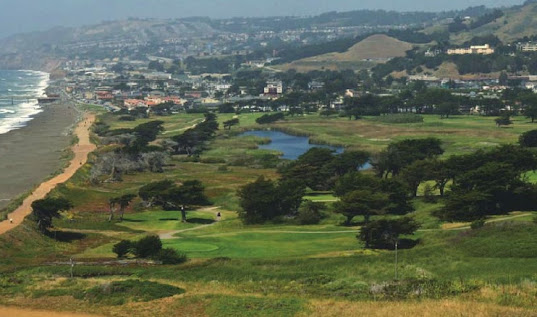A
blizzard! The hottest year ever! More signs that global warming and its
extreme effects are beyond debate, right? Not even close.
By
Jan. 24, 2016 2:45 p.m. ET
An East Coast blizzard howling, global temperatures peaking, the desert
Southwest flooding, drought-stricken California drying up—surely there’s a
common thread tying together this “extreme” weather. There is. But it has little
to do with what recent headlines have been saying about the hottest year ever.
It is called business as usual.
Surface temperatures are indeed increasing slightly: They’ve been going up,
in fits and starts, for more than 150 years, or since a miserably cold and
pestilential period known as the Little Ice Age.
Before carbon dioxide from
economic activity could have warmed us up, temperatures rose three-quarters of a
degree Fahrenheit between 1910 and World War II. They then cooled down a bit,
only to warm again from the mid-1970s to the late ’90s, about the same amount as
earlier in the century.
Whether temperatures have warmed much since then depends on what you look at.
Until last June, most scientists acknowledged that warming reached a peak in the
late 1990s, and since then had plateaued in a “hiatus.” There are about 60
different explanations for this in the refereed literature.
That changed last summer, when the National Oceanic and Atmospheric
Administration (NOAA) decided to overhaul its data, throwing out
satellite-sensed sea-surface temperatures since the late 1970s and instead
relying on, among other sources, readings taken from the cooling-water-intake
tubes of oceangoing vessels. The scientific literature is replete with articles
about the large measurement errors that accrue in this data owing to the fact
that a ship’s infrastructure conducts heat, absorbs a tremendous amount of the
sun’s energy, and vessels’ intake tubes are at different ocean depths. See, for
instance, John J. Kennedy’s “A review of
uncertainty in in situ measurements and data sets of sea surface temperature,”
published Jan. 24, 2014, by the journal Reviews of
Geophysics.
NOAA’s alteration of its measurement standard and other changes produced a
result that could have been predicted: a marginally significant warming trend in
the data over the past several years, erasing the temperature plateau that vexed
climate alarmists have found difficult to explain. Yet the increase remains far
below what had been expected.
It is nonetheless true that 2015 shows the highest average surface
temperature in the 160-year global history since reliable records started being
available, with or without the “hiatus.” But that is also not very surprising.
Early in 2015, a massive El Niño broke out. These quasiperiodic reversals of
Pacific trade winds and deep-ocean currents are well-documented but poorly
understood. They suppress the normally massive upwelling of cold water off South
America that spreads across the ocean (and is the reason that Lima may be the
most pleasant equatorial city on the planet). The Pacific reversal releases
massive amounts of heat, and therefore surface temperature spikes. El Niño years
in a warm plateau usually set a global-temperature record. What happened this
year also happened with the last big one, in 1998.
Global average surface temperature in 2015 popped up by a bit more than a
quarter of a degree Fahrenheit compared with the previous year. In 1998 the
temperature rose by slightly less than a quarter-degree from 1997.
When the Pacific circulation returns to its more customary mode, all that
suppressed cold water will surge to the surface with a vengeance, and global
temperatures will drop. Temperatures in 1999 were nearly three-tenths of a
degree lower than in 1998, and a similar change should occur this time around,
though it might not fit so neatly into a calendar year. Often the compensatory
cooling, known as La Niña, is larger than the El Niño warming.
There are two real concerns about warming, neither of which has anything to
do with the El Niño-enhanced recent peak. How much more is the world likely to
warm as civilization continues to exhale carbon dioxide, and does warming make
the weather more “extreme,” which means more costly?
Instead of relying on debatable surface-temperature information, consider
instead readings in the free atmosphere (technically, the lower troposphere)
taken by two independent sensors: satellite sounders and weather balloons. As
has been shown repeatedly by University of Alabama climate scientist
John Christy, since late 1978 (when the satellite record begins),
the rate of warming in the satellite-sensed data is barely a third of what it
was supposed to have been, according to the large family of global climate
models now in existence. Balloon data, averaged over the four extant data sets,
shows the same.
It is therefore probably prudent to cut by 50% the modeled temperature
forecasts for the rest of this century. Doing so would mean that the
world—without any political effort at all—won’t warm by the dreaded 3.6 degrees
Fahrenheit by 2100 that the United Nations regards as the climate
apocalypse.
The notion that world-wide weather is becoming more extreme is just that: a
notion, or a testable hypothesis. As data from the world’s biggest reinsurer,
Munich Re, MURGY 0.03
%
and University of Colorado
environmental-studies professor Roger Pielke Jr.
have shown, weather-related losses haven’t increased at all over the past
quarter-century. In fact, the trend, while not statistically significant, is
downward. Last year showed the second-smallest weather-related loss of Global
World Productivity, or GWP, in the entire record.
Without El Niño, temperatures in 2015 would have been typical of the
post-1998 regime. And, even with El Niño, the effect those temperatures had on
the global economy was de minimis.
Mr. Michaels, a climatologist, is the director of the Center for the
Study of Science at the Cato Institute.
Submitted by Jim Wagner




